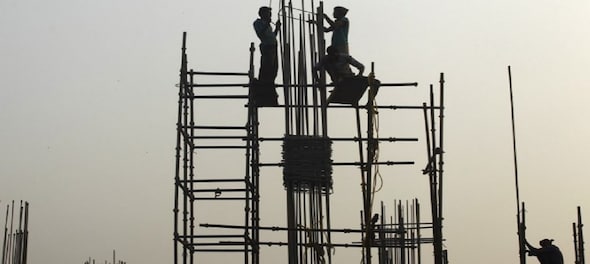
The Union Cabinet has approved a detailed proposal for setting up a government-owned Development Finance Institution (DFI), which was announced in Budget 2021.
Recently, FM Nirmala Sitharaman said that the National Bank for Financing Infrastructure and Development (NaBFID) would be set up with a corpus of Rs 20,000 crore and promised an initial grant of Rs 5,000 crore. A Bill to set up the DFI will be introduced in the ongoing Parliament session.
What is DFI?
The Bill describes DFI as the principal financial institution and development bank for providing and enabling infrastructure financing throughout the life cycle of the projects concerned.
A DFI is basically an organisation, either owned by government or charitable institutions to finance infrastructure projects that are of national importance without expecting the standard commercial return.
Already, there are similar institutions such as national development banks — Industrial Development Bank of India (set up in 1964, granted autonomy in 1976 and converted into a universal bank in 2003), ICICI, and IDFC; financial institutions like National Bank for Agriculture and Rural Development (established in July 1982), and HDFC; and investment institutions like LIC, and UTI.
They finance medium-term (1-5 years) and long-term (more than 5 years) projects.
Is DFI a new idea?
DFIs have evolved in India in three phases — from Independence (1947) to 1964; from 1964 to mid-1990s; and after 1993-94, when development banking declined with the coming of the liberalisation era.
What is the need for DFIs in India?
The major reason is, of course, to boost economic growth followed by the requirement to improve long-term finances and provide credit enhancement, apart from improving debt flows towards infrastructure projects
The target of the proposed NaBFID is to lend Rs 5 lakh crore over three years. The institute will enjoy tax benefits for up to 10 years.
The Centre has also proposed an amendment to the Indian Stamp Act to attract big pension and sovereign funds to invest in DFI, on the lines of the National Infrastructure Investment Fund.
Debt financing through the infrastructure investment trust (InvIT) and real estate investment trust (REIT) routes will be enabled through necessary amendments in the rules.
Sitharaman said that with the help of initial leverage and funds the DFI will able to “reach out, and support long term projects”.
India needs infrastructure financing, that too from financiers who can take long-term risk. But banks have been proved inadequate in giving money for building roads, ports and other infrastructure.
With the government’s increased emphasis on social infrastructure schemes over the past few years, the need to fund them is acute. DFI may give the government the much-needed muscle.
First Published: Mar 18, 2021 7:09 PM IST
Check out our in-depth Market Coverage, Business News & get real-time Stock Market Updates on CNBC-TV18. Also, Watch our channels CNBC-TV18, CNBC Awaaz and CNBC Bajar Live on-the-go!


BJP is planning to ban RSS, says Shiv Sena (UBT) chief Uddhav Thackeray
May 18, 2024 8:01 PM
Punjab Lok Sabha elections: Complete list of Congress candidates
May 18, 2024 4:08 PM
Punjab Lok Sabha elections: Check full list of AAP candidates and constituencies
May 18, 2024 12:59 PM
PM Modi, Rahul Gandhi election rallies in Delhi today: Here are the routes to avoid
May 18, 2024 11:28 AM

